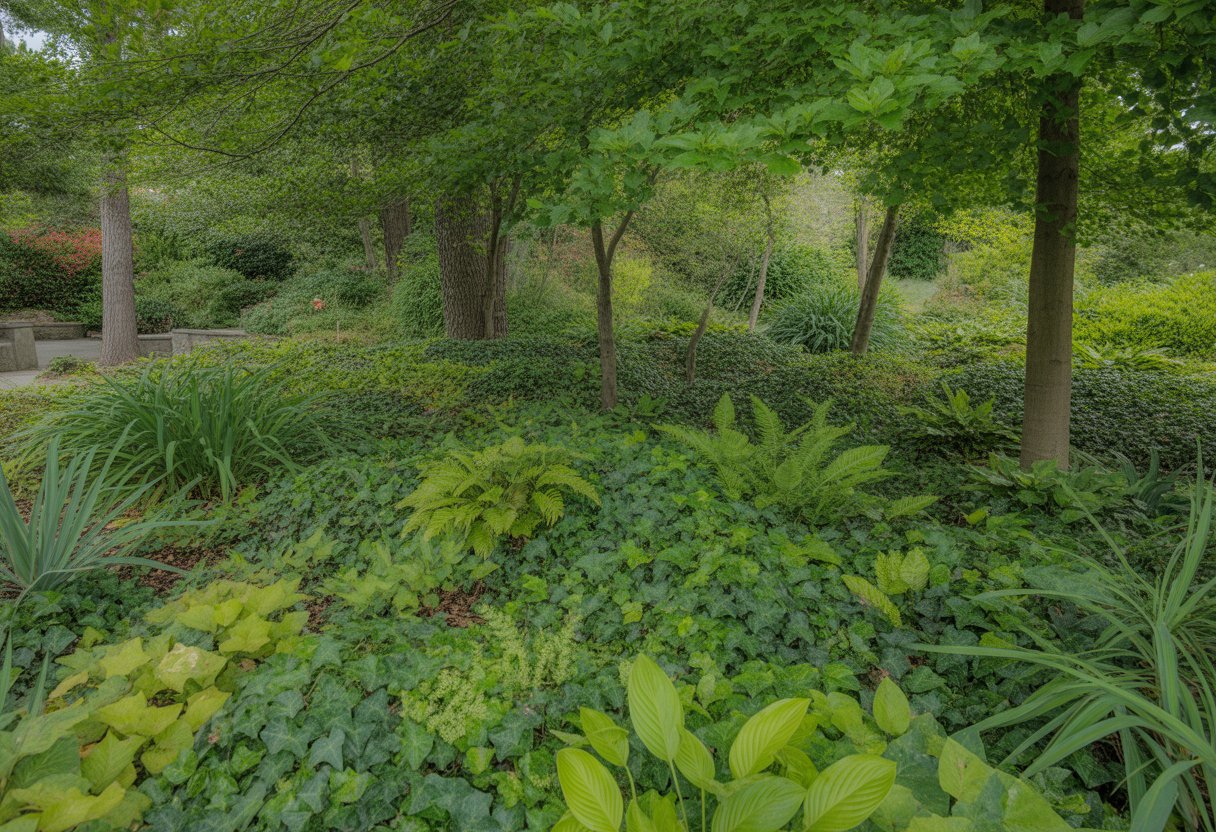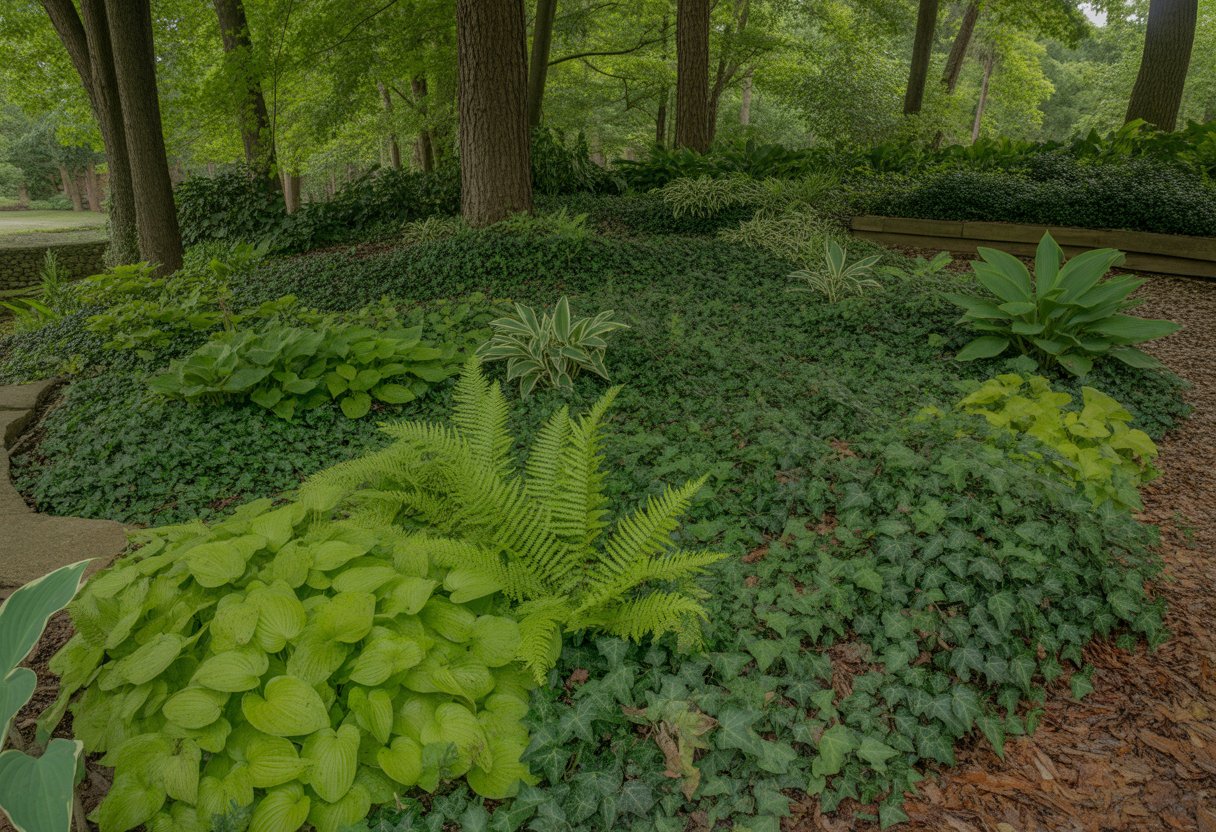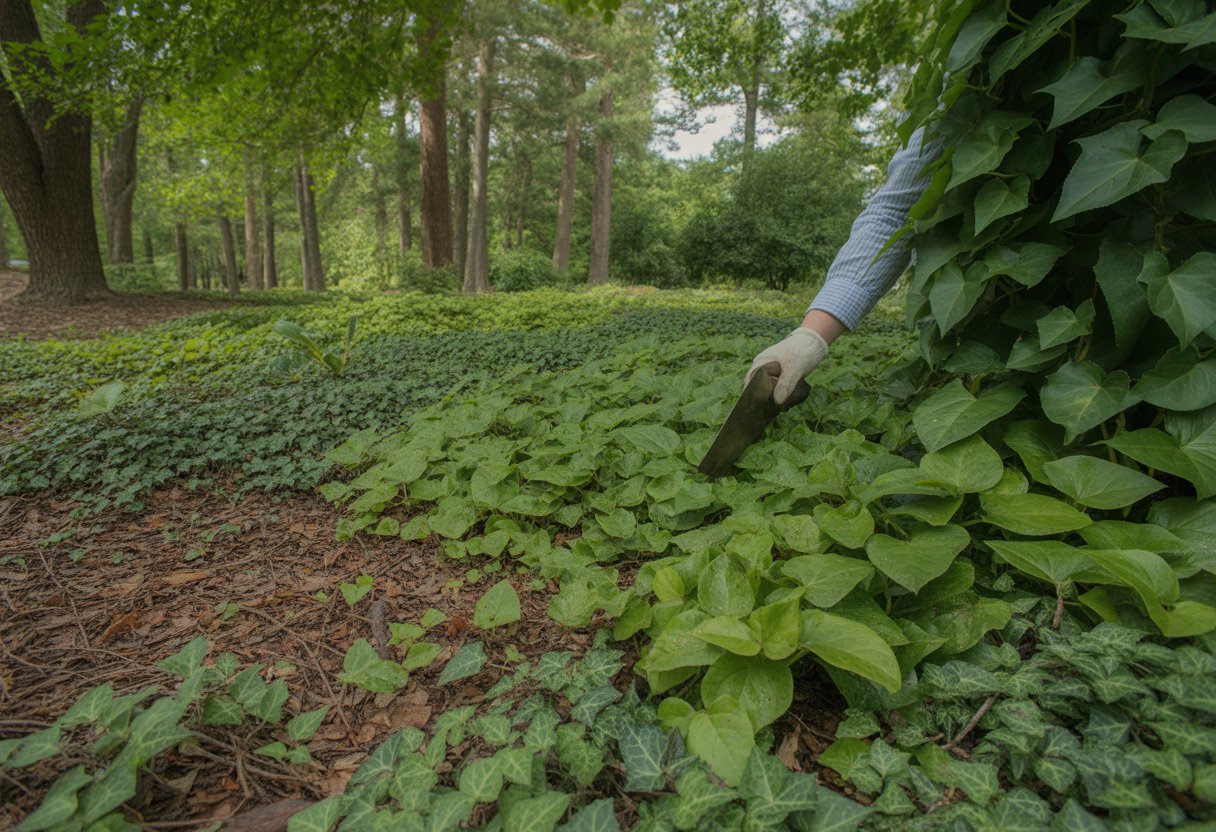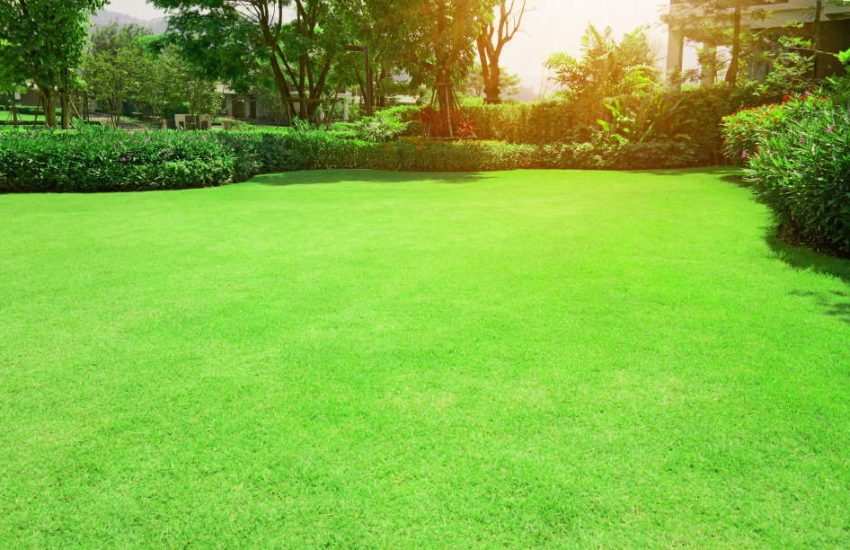Shade Loving Ground Covers North Carolina for Lush, Low-Maintenance Gardens
North Carolina gardens have a tough time with shaded spots. Grass and many plants just don’t want to grow there.
Picking the right shade-loving ground covers can turn those tricky areas into lush, low-maintenance corners. Some of the best ground covers for shaded gardens in North Carolina are pachysandra, ajuga, and sweet woodruff—they handle low light and the state’s climate like champs.

If you’re after reliable shade-tolerant plants, there’s a good lineup that tackles erosion, keeps weeds in check, and adds texture under trees or along shadowy paths. These ground covers handle North Carolina’s mixed-up soils and still keep things interesting all year.
Knowing which species actually thrive in the state’s different environments can make or break your shade garden plans.
Best Shade Loving Ground Covers for North Carolina

Picking shade-tolerant ground covers here means weighing native adaptability against the appeal of some non-natives. Some plants bring bold flowers, others just settle in with thick foliage to crowd out weeds.
It all depends on your soil, how much moisture you have, and what kind of look you want.
Top Native Ground Covers
Chrysogonum virginianum (Green and Gold) is a native that covers ground without much fuss. It’s tough and keeps going.
Phlox divaricata (Woodland Phlox) gives you those spring flowers and attracts pollinators, especially if your soil is rich and moist. Asarum canadense (Canadian Wild Ginger) brings big evergreen leaves and does well in deep shade and acidic soil.
Packera aurea stands out with its splashy yellow blooms and hugs the ground. Pachysandra procumbens (Allegheny Spurge) offers subtle white flowers and looks right at home in woodland spots, especially in the shade.
These natives help local wildlife and usually don’t need much extra water once they settle in.
Popular Non-Native Options
Pachysandra terminalis (Japanese Pachysandra) is a go-to for dense, shade-loving ground cover. Liriope spicata and its dwarf cousin are tough, grassy, and show off purple flower spikes—they handle different soils and even a bit of sun.
Hosta species are all about those big, interesting leaves. They’re mostly planted for their foliage, honestly. Lamium maculatum (Deadnettle) has patterned leaves and pink flowers, and it’s happy in partial shade.
Vinca minor (Periwinkle) spreads fast, but you’ll want to keep an eye on it so it doesn’t take over.
Flowering and Foliage Varieties
For a pop of color and some texture, Heuchera and Heucherella ‘Sweet Tea’ offer foliage in shades from bronze to silver, plus those delicate flower spikes. Saxifraga stolonifera likes moist shade and sends out little runners, with veined leaves and tiny white flowers.
Sweet Woodruff (Galium odoratum) smells nice and has little white flowers, which work well in naturalized shady gardens. Some folks mix in Isotoma fluviatilis alba (white star creeper) or Thymus ‘Purple Carpet’ for dry, shady edges—these have fine leaves and dainty blooms.
Mondo Grass (dwarf type) gives you evergreen grassy texture, while Creeping Jenny brightens up damp spots with its bold chartreuse leaves. These picks keep things interesting and fill in under bigger plants.
Design and Uses for Shade Loving Ground Covers

Shade-loving ground covers do a lot of heavy lifting in North Carolina gardens. They fight off weeds, keep soil erosion at bay, and make garden features look intentional instead of patchy.
They also pair well with trees and shrubs, giving your shade garden a finished, layered vibe.
Choke Out Weeds and Soil Erosion Control
Dwarf mondo grass and carex form thick mats that block sunlight from reaching the soil, so weeds barely stand a chance. You won’t have to reach for weed killer or spend your weekends pulling invaders.
These ground covers also hang onto soil on slopes or under shrubs, which is pretty crucial during North Carolina’s heavy rains. Their roots lock things in place, and woodland phlox is especially good for this, keeping the hillside green and intact.
Creating Paths and Borders
Ground covers can shape out pathways and borders, especially where grass just won’t cut it. Dwarf mondo grass works well between stepping stones, softening the look but still letting you walk through.
They help outline garden beds and shaded areas, breaking up the space in a way that looks natural. With a little trimming now and then, you can keep edges neat and stop plants from spilling into walkways.
Pairing With Trees and Shrubs
Groundcovers fill in bare spots under trees and shrubs, blending right into their root zones. Carex, for example, adapts to the dappled light beneath big trees and gives you green ground cover all year.
If you pick species that match your soil and light, you’ll build a healthier plant community. These ground covers help the soil hold onto moisture and keep roots from getting too hot or cold—good news for nearby shrubs.
Caring for Shade Loving Ground Covers in North Carolina

Taking care of shade-loving ground covers means paying attention to what they like: the right soil, water, and light. If you go for drought-tolerant species, you won’t have to water as much.
A little regular maintenance keeps them healthy and helps them handle North Carolina’s weather.
Soil, Light, and Water Needs
Ground covers like Carex and Epimedium spp. do best in rich, well-drained soil with plenty of organic matter. Most North Carolina gardens have soil pH between 5.5 and 6.5, which suits lots of shade plants.
You’ll want to plant these in the shade under trees or on north-facing slopes, where they get filtered light. Watering should be steady but not over the top—these plants like moist soil, but they hate soggy feet.
Water in the morning to help prevent disease, and check soil moisture during dry stretches.
Drought-Tolerant Choices
If you’re in a spot that’s dry or has unpredictable rain, drought-tolerant ground covers like Sedum takesimense and Liriope spicata hold up well. They keep moisture in and don’t stress out when things get dry.
Still, give them regular water at first so they can get established. After that, they usually only need a drink every couple of weeks when it’s really dry.
Mulching around the base helps keep the soil moist longer—definitely worth doing.
Maintenance and Seasonal Tips
Maintenance means getting rid of dead leaves, pulling weeds, and trimming to keep things from getting too wild.
When late winter or early spring rolls around, I like to cut back dead foliage from plants like Epimedium—it really seems to help new growth pop up. Tossing down some leaf mold or compost as mulch boosts the soil and helps it hold onto moisture.
Keep an eye out for pests and diseases, especially with North Carolina’s humid weather. Ground covers don’t need much fertilizer, but I usually go with a slow-release, balanced type in early spring for a little extra help.
If you give your plants enough space, you’ll get better airflow, which can help cut down on those annoying fungal issues.

